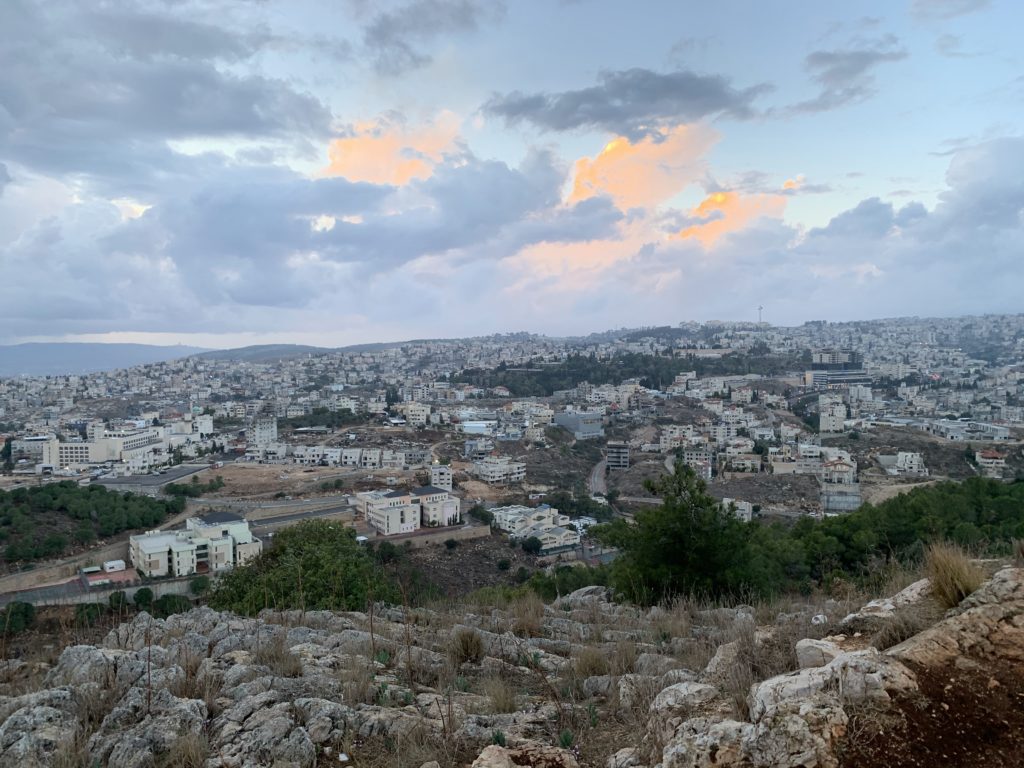Nazareth
Most of my posts in this series up to this point have involved sites more related to the Old Testament than to the New Testament. The New Testament alone specifically mentions the town of Nazareth. The town sits about 20 miles east of the Mediterranean Sea and about 15 miles west of the Sea of Galilee. Jerusalem lies about 70 miles to the south. Nazareth, Sepphoris, and Capernaum all lie along the Via Maris (“the Way of the Sea”), the caravan route running from Damascus to Caesarea Maritima on the shores of the Mediterranean.
History and Archaeology
Archaeological materials uncovered in Nazareth consist primarily of remains from the Late Hellenistic to Late Roman periods, a Byzantine church and monastery, some early Islamic remains, and a Crusader church and monastery. Near the end of the 7th century AD two churches were built at Nazareth — one in the center of the town marking the site of Jesus’ boyhood home and one on the site of Mary receiving the announcement by Gabriel. Tancred, made “Prince of Galilee” in 1069, built the Church of the Annunciation, but an earthquake destroyed it in 1170. The Druze emir, Fakhr-a-Din II (1591–1635) permitted the Franciscans to purchase the church’s land and ruins in 1620. They were finally able to rebuild the church in 1730. The church was demolished in 1955 in order to build a new basilica, which was dedicated in 1969 and preserves the outline of the post-1170 Crusader church. On the basilica’s lower level some Byzantine remains are accessible for viewing. In a basilica courtyard visitors can look down at an excavation containing grain silos, olive presses, storage areas, and house foundations from the first century AD.
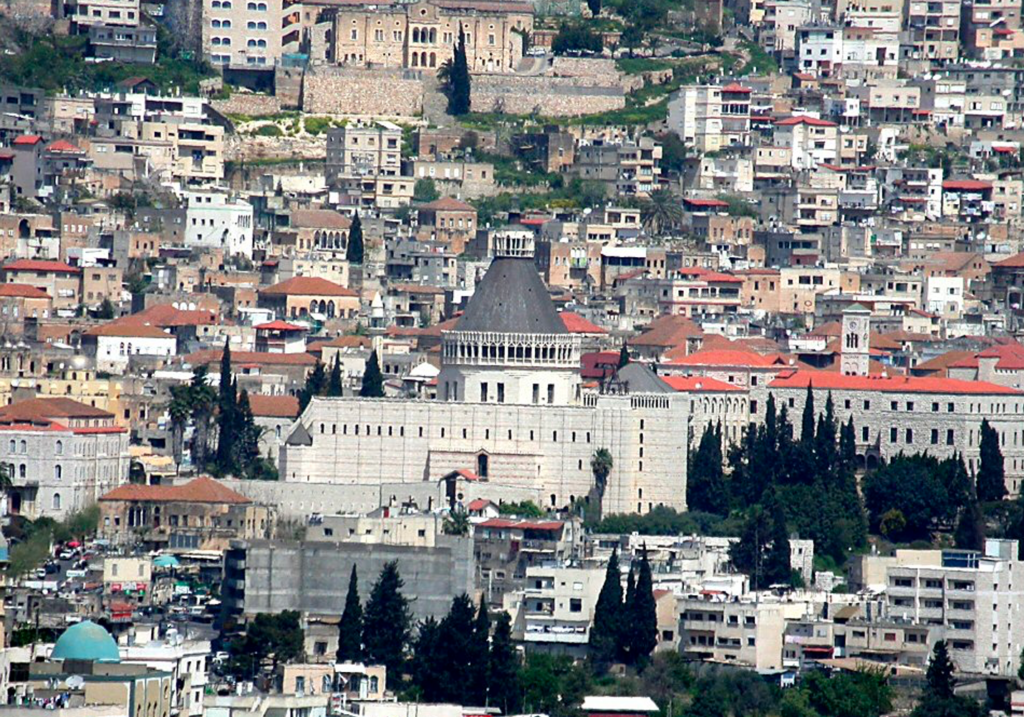

Little archaeological work has been carried out in Nazareth. However, excavations have taken place starting with P. de Vlaminek (1895) and Prosper Viaud (1907–1909), who conducted early limited excavations of the areas enclosed within the Church of the Annunciation and the Church of St. Joseph. In 1936 Henri Senès produced drawings of previously exposed structures and conducted very limited digging. His drawings and maps are in possession of the Sisters of Nazareth (Dames de Nazareth) Convent. Bellarmino Bagatti commenced excavations in 1954 and into the 1960s. Ross Voss, Stephen J. Pfann, and Yehudah Rapuano excavated a first century AD Nazareth farm on the site of Nazareth Village (1997–2002). In 2006 a British archaeological project, sponsored by the Palestine Exploration Fund and the Late Antiquity Research Group, began under the direction of Ken Dark. It is known as the Nazareth Archaeological Project (NAP) and takes place in the Sisters of Nazareth Convent across from the Church of the Annunciation. At that site archaeologists have uncovered a first century AD house. In 2009 Yardenna Alexandre (link is for an AP video) excavated another first century AD Jewish house where the International Marian Center would be constructed. Both houses were of the courtyard type characteristic of the early Roman period in Galilee. Associated with the NAP house was a first century AD tomb with a rolling stone. Fragments of limestone vessels gave evidence of Jewish inhabitants. (The inhabitants of modern day Nazareth currently consist of approximately 2/3 Muslim and 1/3 Christian.)
The earliest remains at Nazareth indicate some single generation occupations as early as the Bronze Age (3500–2350 BC). Some evidence of Iron Age (1200–586 BC) has been recovered. A continuing occupation appears to have begun in the third century BC as a small agricultural village whose inhabitants built cisterns, storage areas, and other underground installations into the soft limestone. Kefar Hananya pottery provides a ceramic profile from the second half of the first century BC through to the fourth century AD. This type of pottery shows up very commonly in Galilee in the Roman period. It comprises 73% of the dated pottery from this period of time — see.Uzi Leibner, Settlement and History in Hellenistic, Roman, and Byzantine Galilee: An Archaeological Survey of the Eastern Galilee, Text and Studies in Ancient Judaism 127 (Tübingen, Germany: Mohr Siebeck, 2009), 27.
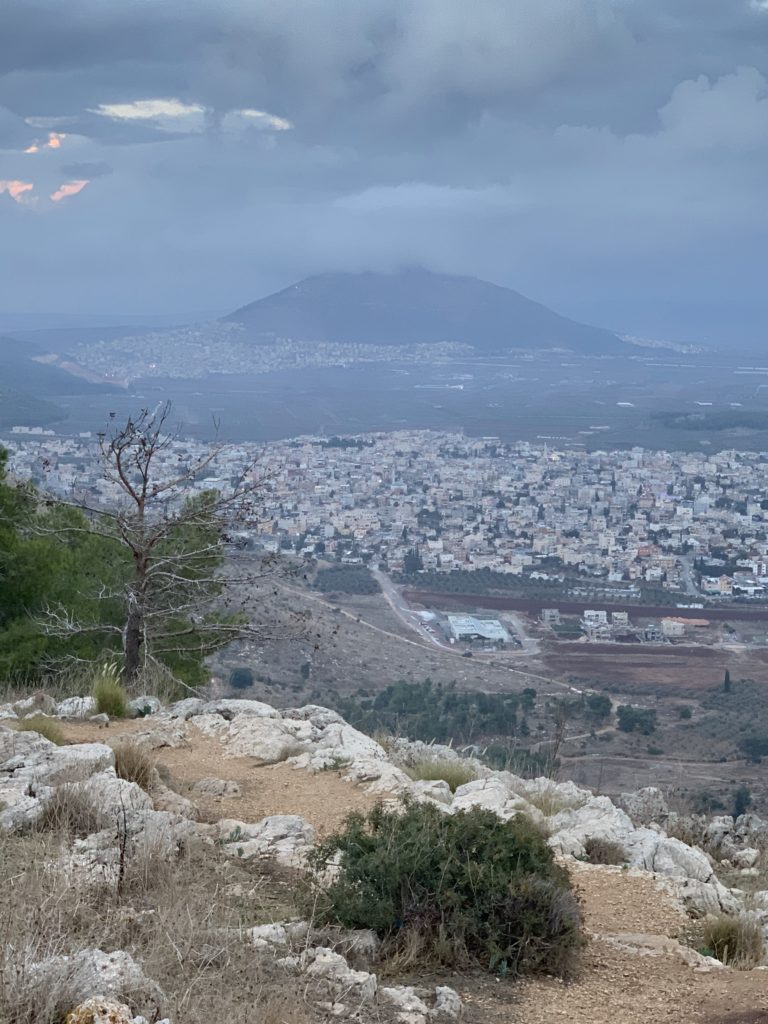
Biblical References
- Joshua 19:10–23 locates Nazareth in the territory of Issachar and Zebulun. From the nature of the list of towns and villages in these tribal allotments, the writer seems to have oriented their arrangement around Nazareth. Boundaries and towns radiate east and west from Nazareth. See Victor H. Matthews, Mark W. Chavalas, and John H. Walton, The IVP Bible Background Commentary: Old Testament (Downers Grove, IL: InterVarsity Press, 2000), 236.
- Matthew 2:19–23; Mark 1:9; Luke 1:26–37 — At Nazareth Mary heard the angel’s announcement of Jesus’ birth. The biblical writers sometimes merged the contents of two or more texts. Likewise, they often used puns, homonyms, and a variety of associations in giving meaning to a place name or individual’s name. Matthew could use nētser (“branch”) as an Old Testament title of Messiah (Jeremiah 23:5; 33:14–16; Zechariah 3:8; 6:12; cf. Isaiah 11:1) in how he associates Jesus with Nazareth.
- Luke 2:4, 39, 51 — Jesus’ boyhood home.
- Luke 4:16–30 — The first rejection of Jesus took place in Nazareth’s synagogue.
- Mark 6:1–6; Matthew 13:53–58 — The second rejection of Jesus.
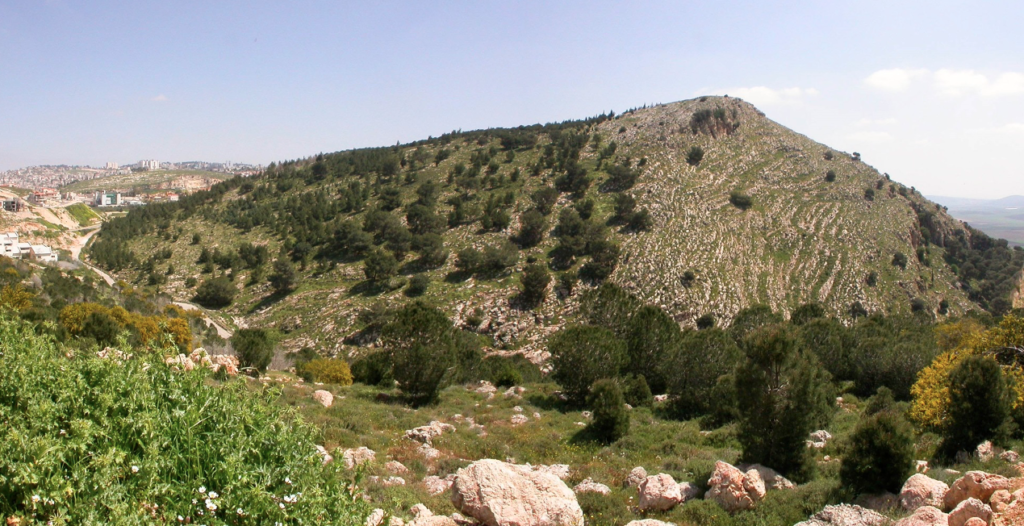
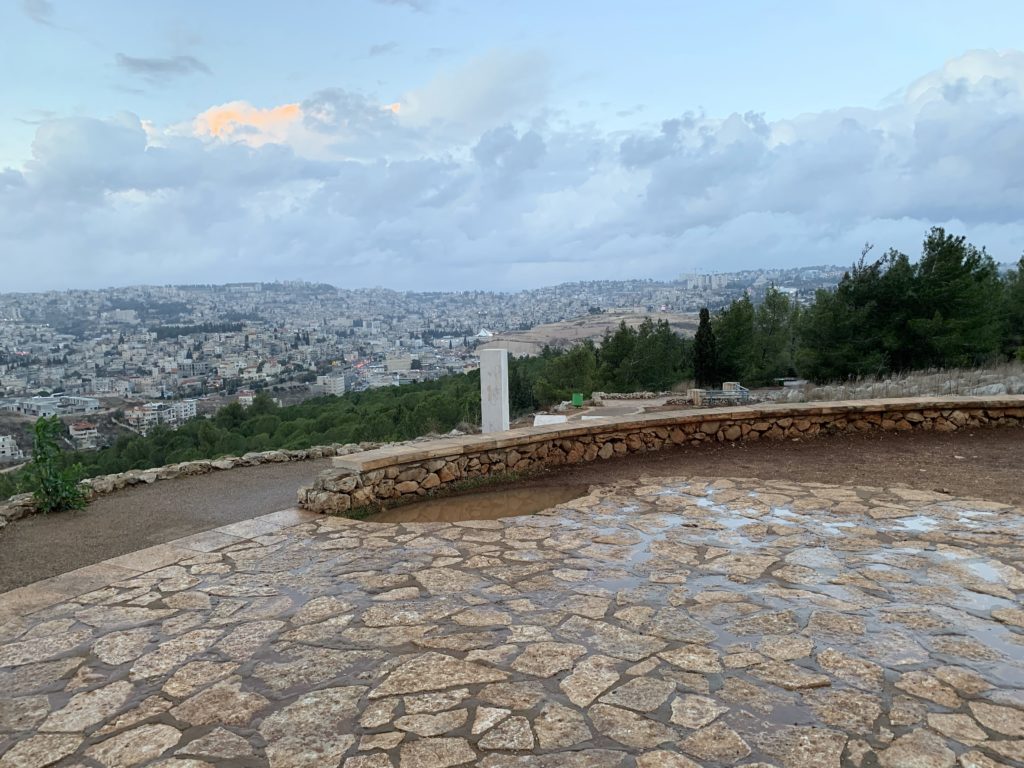
Why did Joseph bring his family to Nazareth? They were obviously of the tribe of Judah and from the town of Bethlehem (Luke 2:1–7; cp. Matthew 1:20; 2:1).
- Going to Nazareth came about as a fulfillment of prophecy involved in Messiah being the “Branch” (see second bullet point above).
- It was a fulfillment of prophecy that Messiah would be a light to Galilee of the Gentiles (Isaiah 9:1–2; cf. Matthew 4:12–16).
- Joseph might have moved his family from Bethlehem to Nazareth when Herod Antipas (4 BC–AD 39), son of Herod the Great (37–4 BC), was recruiting artisans for rebuilding his capital at Sepphoris (Zippori today) which had been destroyed and its citizens enslaved. As a carpenter, Joseph worked with more than wood — he also worked as a stone mason. Nazareth’s population in Jesus’ time may have amounted to 1,600–2,000 people — which represents significant growth in the first century AD. According to James F. Strange, “As inferred from the Herodian tombs in Nazareth, the maximum extent of the Herodian and pre-Herodian village measured about 900 × 200 m, for a total area just under 60 acres. Since most of this was empty space in antiquity, the population would have been a maximum of about 480 at the beginning of the 1st century A.D.” — “Nazareth (Place),” in The Anchor Yale Bible Dictionary, ed. David Noel Freedman (New York: Doubleday, 1992), 1050. Keener suggests that Joseph and Mary were only one family migrating from the region around Bethlehem to the area of Nazareth and Sepphoris:
Archaeological evidence in the region of Nazareth indicates that many people had moved there from Judea, from the area near Bethlehem. Joseph may have had friends or relatives in Nazareth (cf. Lk 2:4). Nazareth was on a major road from the coast to Syria and only a few miles from the culturally diverse city of Sepphoris, which was being rebuilt at this time. Though small, Nazareth would not have been isolated from broader cultural currents of antiquity.
— Craig S. Keener, The IVP Bible Background Commentary: New Testament (Downers Grove, IL: InterVarsity Press, 1993), 51.
Archaeologists David Amit (Israel Antiquities Authority) and Yonatan Adler (Bar-Ilan University) point to evidence supporting the presence of stone masons in the region around Nazareth and Sepphoris during the time of Jesus in the first century AD:
In late 2001, David Amit conducted a limited archaeological probe in a cave located near the village of A-Reina (near Upper Nazareth) that served as a quarry and workshop for the production of stone vessels. The manufacturing area was located in the forward section of the cave, where a small probe (2 Å~ 2 m, 1 m deep) unearthed approximately 600 conical cores that had been extracted from the interior of stone vessels (mostly stone “measuring cups”) on a lathe and an additional 40 stone vessels (cups and bowls of various typological forms) that had broken in the course of the manufacturing process. In addition to the A-Reina workshop, we know of one stone-vessel workshop that functioned in Bethlehem of Galilee, where Ariel Berman discovered stone-vessel debitage. At this point, we can note finds of stone-vessel fragments from third–fourth century contexts discovered at a number of sites in the north (see fig. 9). An almost complete barrel-shaped krater dated to the third–fourth centuries c.e. was uncovered in the excavation of a farmstead east of Sepphoris. Five fragments of similar stone kraters were found in sealed loci beneath the synagogue of Sepphoris, together with a pottery assemblage dated to the third and fourth centuries c.e. (see fig. 10). It appears that some of the stone vessel fragments found on the acropolis of Sepphoris may date to the Middle Roman period (135–250 c.e.).
— David Amit and Yonatan Adler, “The Observance of Ritual Purity after 70 C.E.: A Reevaluation of the Evidence in Light of Recent Archaeological Discoveries,” in “Follow the Wise”: Studies in Jewish History and Culture in Honor of Lee I. Levine, ed. by Zeev Weiss, Oded Irshai, Jodi Magness, and Seth Schwartz, 121–43 (Winona Lake, IN: Eisenbrauns, 2010), 139–41.
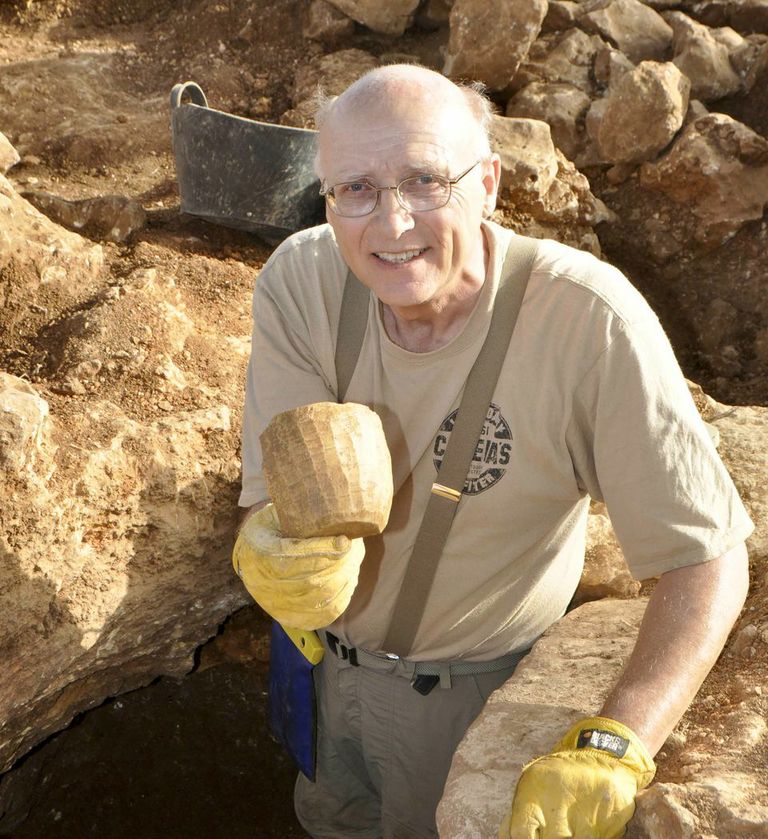
Nazareth Inscription: Scholars began studying a marble tablet at the Louvre in Paris in the 1930s. It warned robbers to stay clear of tombs. A note accompanying the tablet said it “came from Nazareth.” It quickly caused a great deal of speculation that it arose out of a desire to deny the resurrection of Jesus soon after that event had taken place. The tablet’s significance and authenticity sparks debate over its historical setting. See references below for more information.
Nazareth Village: In order to depict what life was like in the first century AD, Nazareth Village was established in 2000 on the site of a first-century terrace farm on the outskirts of the ancient village of Nazareth, the boyhood home of Jesus (see video link below). Excavations by Pfann, Voss, and Rapuano have revealed evidence for a working first century AD farm on this location (see article below).
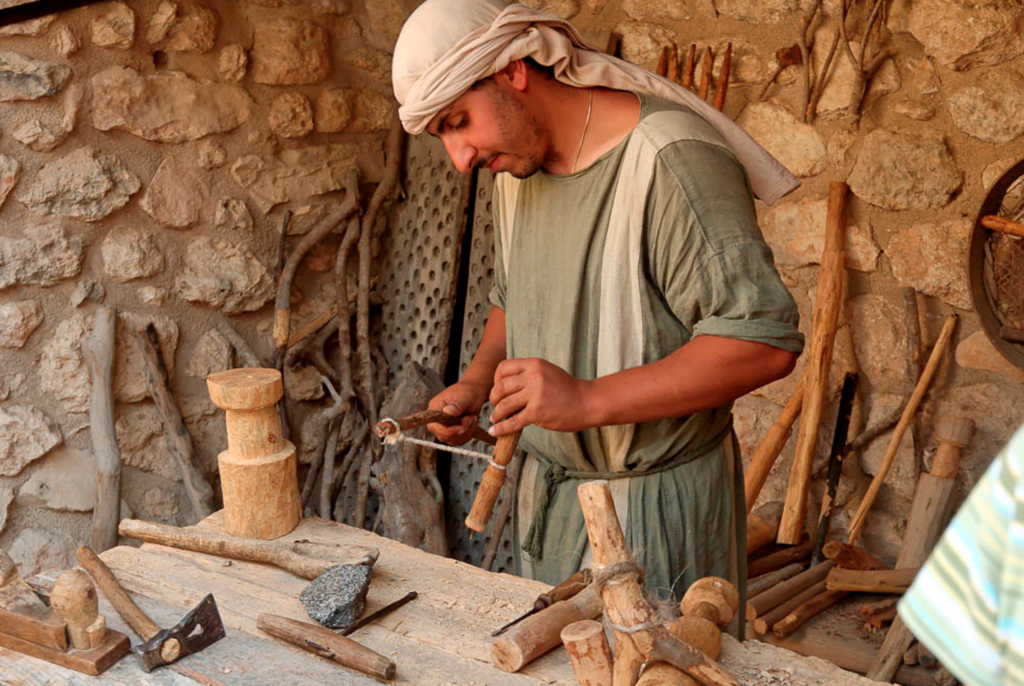
Among the finds at Nazareth Village excavators discovered stone quarries along with terraces, watch towers, threshing floor, irrigation channels, a tomb, and pottery. Area C-1 yielded pottery from the first century AD.
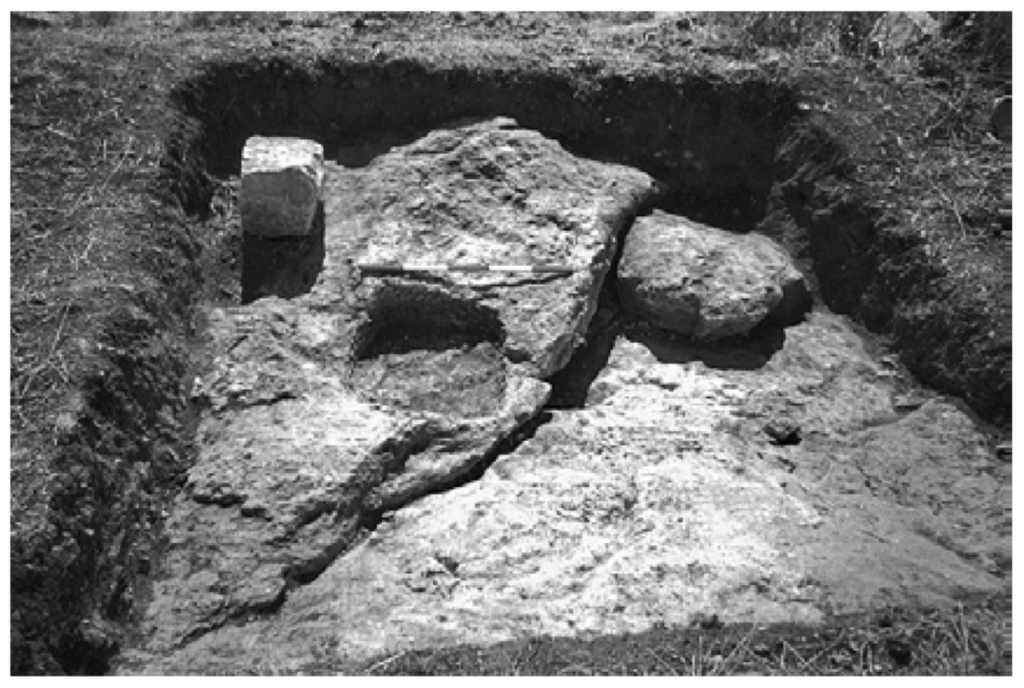
Recommended Resources
- Amit, David, and Yonatan Adler. “The Observance of Ritual Purity after 70 C.E.: A Reevaluation of the Evidence in Light of Recent Archaeological Discoveries.” In “Follow the Wise”: Studies in Jewish History and Culture in Honor of Lee I. Levine, ed. by Zeev Weiss, Oded Irshai, Jodi Magness, and Seth Schwartz. Winona Lake, IN: Eisenbrauns, 2010. 121–43.
- Billington, Clyde E. “The Nazareth Inscription: Proof of the Resurrection of Christ?” Associates for Biblical Research, Research Blog: New Testament Era: Who Is Emmanuel? May 1, 2020. Republished from Artifax (Spring 2020). For an earlier publication of Billington’s evaluation and photo of the inscriptions, see ABR Research Blog, July 22, 2009.
- Chancey, Mark. “How Jewish Was Jesus’ Galilee?” Biblical Archaeology Review 33, no. 4 (2007): 42–50, 76.
- Crook, Wilson W., III. “Roman Ceramics in First Century A.D. Palestine.” Journal Houston Archeological Society 138 (2018): 123–27. (Provides more information about the Kefar Hananya pottery type.)
- Dark, Ken. “Has Jesus’ Nazareth House Been Found?” Biblical Archaeology Review 41, no. 2 (2015): 54–63.
- Harper, Kyle, et al. “Establishing the provenance of the Nazareth Inscription: Using stable isotopes to resolve a historic controversy and trace ancient marble production.” Journal of Archaeological Science: Reports 30 (April 2020): 102–28.
- Leibner, Uzi. Settlement and History in Hellenistic, Roman, and Byzantine Galilee: An Archaeological Survey of the Eastern Galilee. Text and Studies in Ancient Judaism 127. Tübingen, Germany: Mohr Siebeck, 2009.
- “Nazareth Overview Tour: Church of the Annunciation, Mary’s Well, Mt Precipice, Jesus’ Hometown.” HolyLandSite.org. YouTube video. June 1, 2018.
- Pfann, Stephen, Ross Voss, and Yehudah Rapuano. “Surveys and Excavations at the Nazareth Village Farm (1997–2002): Final Report.” Bulletin of the Anglo-Israel Archaeological Society 25 (2007): 19–79.
- Sergio and Rhoda in Israel, Season 2, Episode 12: “Archaeologists Find a Stone Quarry from the Time of Jesus in Nazareth.” YouTube video. November 18, 2018. [See essay by Amit and Adler above.]
- Sergio and Rhoda in Israel, Season 1, Episode 22: “1st Century Nazareth Village Comes to Life.” YouTube video. September 24, 2017. [See picture above.]

